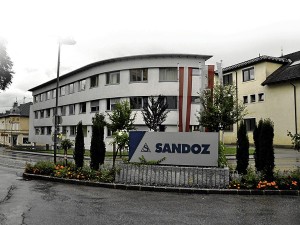Novartis’ generics firm’s edge

Providing affordable medicines that adhere to international standards and having direct access to the research and development portfolio of its mother company are just two of the aces this generics company in Holzkirchen, Germany has up its sleeve.
During a tour to one of its several global production plants in Kundl, Austria—the home of oral penicillin—Inquirer Science and Health was able to sit down with executives of the international generics firm Sandoz International GmbH. There, they explained that mother company Novartis was its big advantage over other generics firms.
As a member of Novartis, Sandoz stressed it has established a reputation for setting new standards within the generics industry.
High-quality generics
“Our customers know this has always been the same high-quality standards as those of, say, sanofi aventis or a Novartis or an MSD drug. Only the business models are different. We’re into high-quality generics, it’s not down-the-basement drugs,” said Lisa Richert, head, country communications strategy of Sandoz.
Sandoz develops, produces and markets approximately 1,000 generics drugs in over 130 countries. It is one of the two largest generics companies worldwide and the industry’s first truly global company. It holds leading positions in the largest markets, including the United States and Germany. Richert said customers trust Sandoz for its consistent and continual delivery of innovative and affordable healthcare solutions.
Chris Lewis, head of global issues management and biopharma communications of Sandoz, discussed the varying degrees of regulatory systems all over the world that the firm has to keep in mind. “In Germany, Western Europe and the United States, there are very clear regulations. Generics drugs cannot be out in the market unless they have the same standard as the originator.”
Sandoz’s range of generics covers all major therapeutic areas, including treatments for cardiovascular, central nervous system, gastrointestinal, respiratory, pain, hormone disorders and muscular/skeletal disorders. It also plays a leading role in the production of essential anti-infectives, such as antibiotics, with a track record going back to the invention of oral penicillin in 1951.
Its broad portfolio ranges from complex technologies such as injectables and inhalers to transdermal patches, films, implants and complex oral solids.
